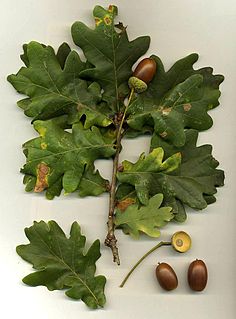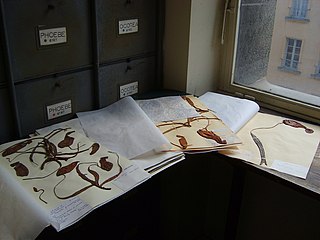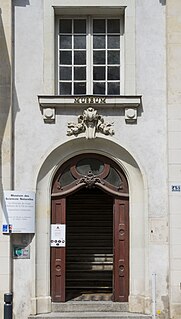
The Arboretum Gaston Allard (7 hectares), also known as the Arboretum d'Angers and formerly the Arboretum de la Maulévrie, is a municipal arboretum located at 9, rue du Château d'Orgement, Angers, Maine-et-Loire, Pays de la Loire, France. It is open daily.

An arboretum in a general sense is a botanical collection composed exclusively of trees. More commonly a modern arboretum is a botanical garden containing living collections of woody plants and is intended at least in part for scientific study.

Angers is a city in western France, about 300 km (190 mi) southwest of Paris. It is chef-lieu of the Maine-et-Loire department and was the capital of the province of Anjou until the French Revolution. The inhabitants of both the city and the province are called Angevins. Not including the metropolitan area, Angers is the third most populous commune in northwestern France after Nantes and Rennes and the 17th in France.

Maine-et-Loire is a department of the Loire Valley in west-central France, in the Pays de la Loire region.
The arboretum was begun in 1863 by botanist Gaston Allard (1838-1918) within the closerie Maulévrie, which was then his home. He continued planting until his death in 1918. The property was ceded to the city in 1960, and his former home now houses the Botany Department of the Museum of Natural Sciences of Angers.

Botany, also called plant science(s), plant biology or phytology, is the science of plant life and a branch of biology. A botanist, plant scientist or phytologist is a scientist who specialises in this field. The term "botany" comes from the Ancient Greek word βοτάνη (botanē) meaning "pasture", "grass", or "fodder"; βοτάνη is in turn derived from βόσκειν (boskein), "to feed" or "to graze". Traditionally, botany has also included the study of fungi and algae by mycologists and phycologists respectively, with the study of these three groups of organisms remaining within the sphere of interest of the International Botanical Congress. Nowadays, botanists study approximately 410,000 species of land plants of which some 391,000 species are vascular plants, and approximately 20,000 are bryophytes.
Today the arboreum contains an excellent collection of trees: approximately 4,300 specimens represent 1,600 taxa, including 705 taxa of conifers and 50 of oaks, with notable specimens of Quercus variabilis , Pseudocydonia sinensis , and Tilia mongolica . In 1980 the arboretum was augmented with a national collection of hydrangeas, which now contains approximately 750 taxa. Three new gardens have been added: a shade garden (2000 m²), test garden (4000 m²), and garden of the five senses (1200 m²). All told these gardens contain about 20,000 plants.

In biology, a taxon is a group of one or more populations of an organism or organisms seen by taxonomists to form a unit. Although neither is required, a taxon is usually known by a particular name and given a particular ranking, especially if and when it is accepted or becomes established. It is not uncommon, however, for taxonomists to remain at odds over what belongs to a taxon and the criteria used for inclusion. If a taxon is given a formal scientific name, its use is then governed by one of the nomenclature codes specifying which scientific name is correct for a particular grouping.

An oak is a tree or shrub in the genus Quercus of the beech family, Fagaceae. There are approximately 600 extant species of oaks. The common name "oak" also appears in the names of species in related genera, notably Lithocarpus, as well as in those of unrelated species such as Grevillea robusta and the Casuarinaceae (she-oaks). The genus Quercus is native to the Northern Hemisphere, and includes deciduous and evergreen species extending from cool temperate to tropical latitudes in the Americas, Asia, Europe, and North Africa. North America contains the largest number of oak species, with approximately 90 occurring in the United States, while Mexico has 160 species of which 109 are endemic. The second greatest center of oak diversity is China, which contains approximately 100 species.

Quercus variabilis, the Chinese cork oak, is a species of oak in the section Quercus sect. Cerris, native to a wide area of eastern Asia in southern, central, and eastern China, Taiwan, Japan, and Korea.
The arboretum also contains a major herbarium of more than 350,000 specimens dating from the 19th and 20th centuries.

A herbarium is a collection of preserved plant specimens and associated data used for scientific study..










